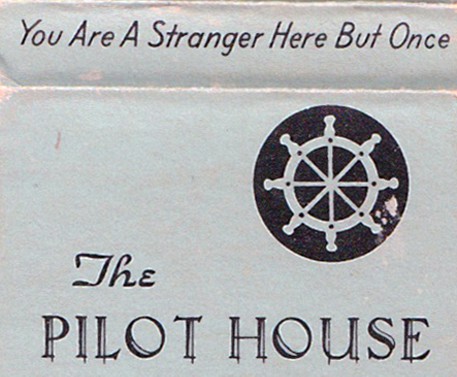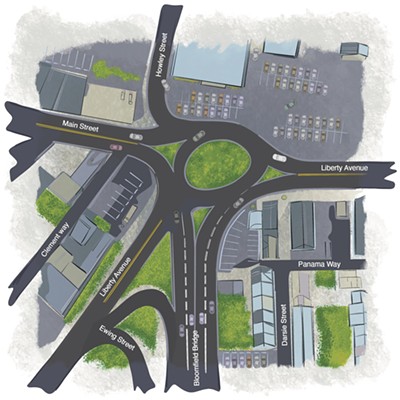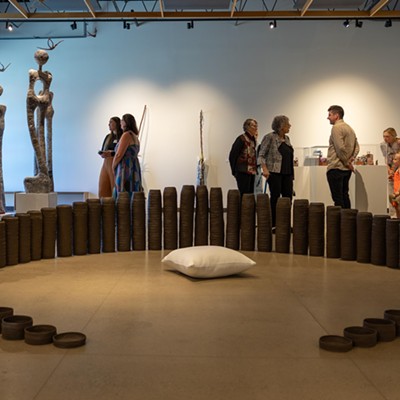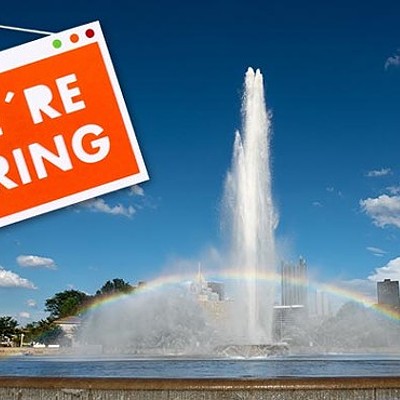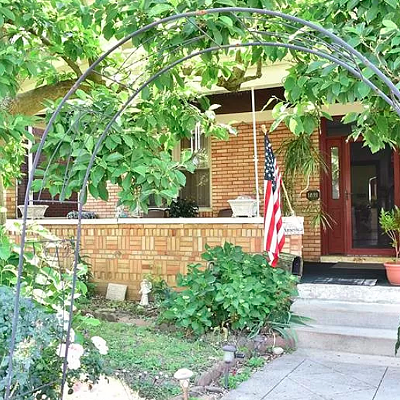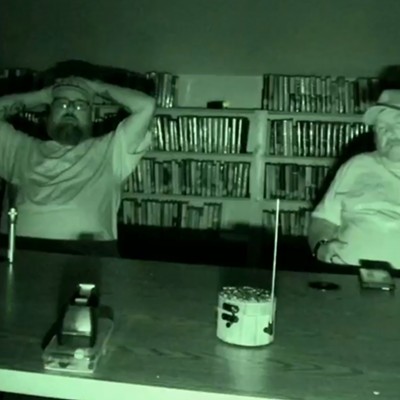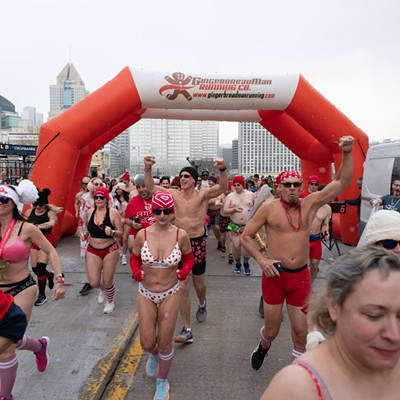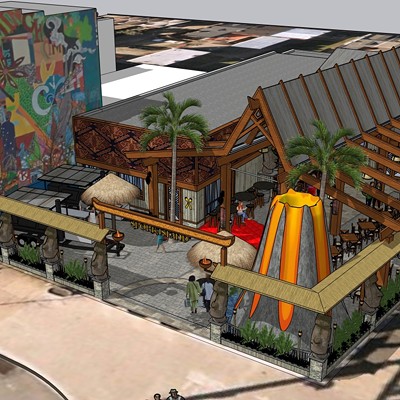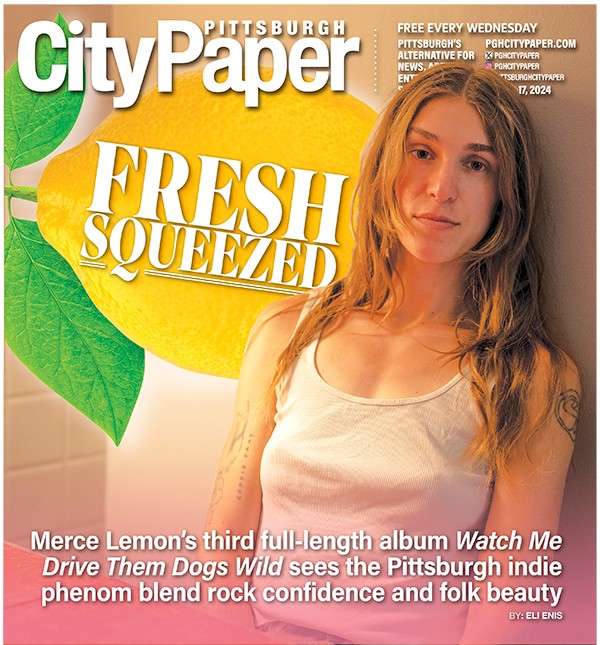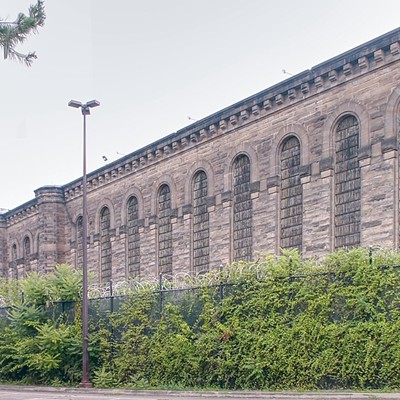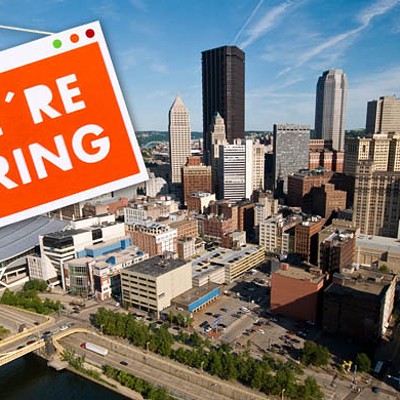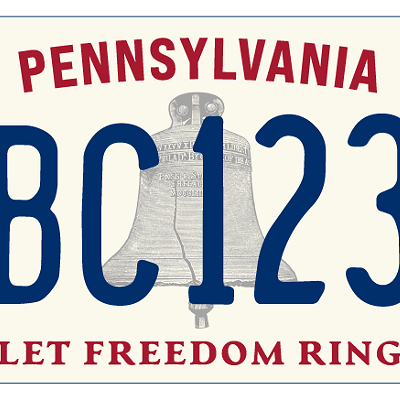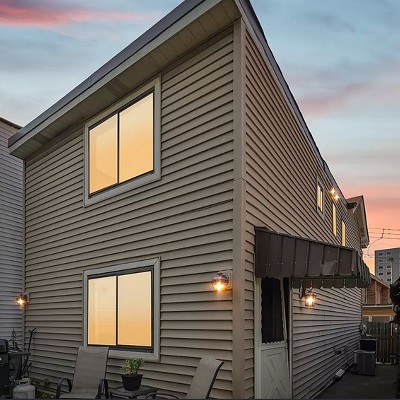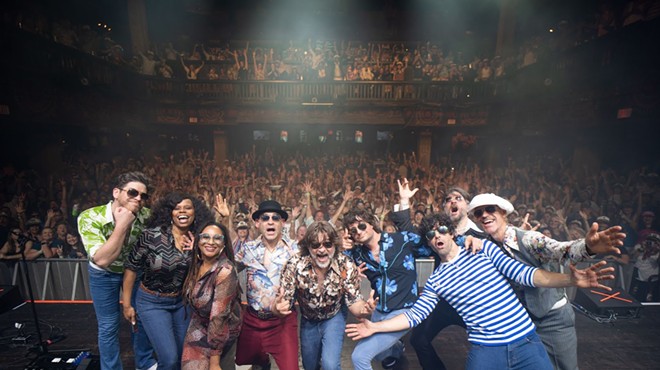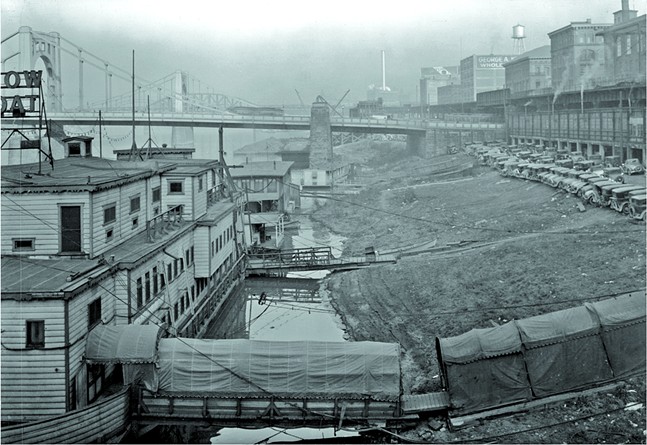
Pittsburghers have been rockin’ and rollin’ on the rivers since our city’s founding. On any given day, it’s still possible to watch riverboats and barges plying the waters of the three rivers (as Pittsburgh City Paper often does). Creative entrepreneurs throughout the city’s history have capitalized on the rivers as real estate: places to moor floating casinos, speakeasies, and nightclubs, ranging from Bongiovanni’s Floating Palace in the 1920s to the Pilot House in the 1960s and the Boardwalk in the 1990s.
Though it’s still possible to dine on the water on Herr’s Island (Washington’s Landing), get raucous on a floating tiki lounge, or take in a meal and riverfront sights during a Gateway Clipper cruise, the days of big bands on barges and spectacular police raids are long gone.
“There was certainly vice on those boats. How could there not be, you know? It’s kind of perfect in a lot of ways,” says historian Sue Morris.
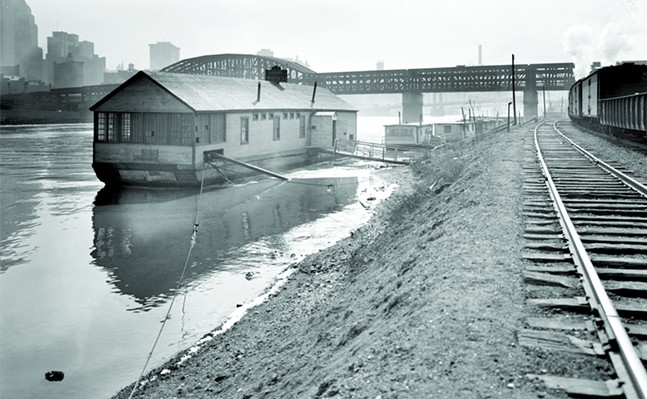
Few people alive today remember partying at the Thunderbird Boatel in Blawnox, and there may be fewer who can recall imbibing and bunking at the Ship Hotel moored in the Allegheny River. Fortunately, all that history didn’t sink and disappear, like a certain B-25 bomber did in 1956.
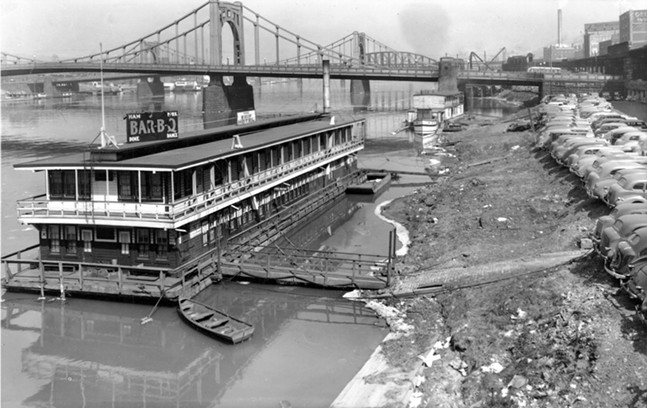
Pleasure Scows and Floating Palaces
In the late 1800s and early 1900s, riverboats traveling between Pittsburgh and New Orleans carried passengers and musicians. Historian William Howland Kenney described the music that traveled with them as “riverboat jazz.” By the 1920s, jazz excursions along the Ohio and Mississippi rivers became a popular pastime.
Local entrepreneurs looked at the rivers and saw dollar signs.
Frank Bongiovanni was an Italian immigrant who arrived in Pittsburgh around 1905. He worked in downtown Italian restaurants until 1913, when he bought the Nixon Café in the Nixon Theatre building on Sixth Avenue.
When Prohibition hit in 1920, Bongiovanni opened a sprawling roadhouse in rural Hampton Township. Three years later, John Eichleay & Company built a “floating palace” and rented it to Bongiovanni. First moored at the Mon Wharf, it began a 20-year run as one of the city’s most infamous speakeasies and casinos.
The floating palace was little more than a barge with a building atop the deck. It had no engine and, over its lifetime, had to be towed or pushed by other boats when it changed locations.
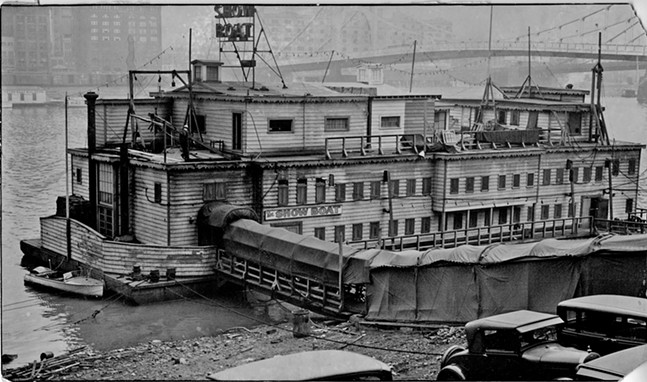
Bongiovanni repeatedly battled city officials over docking fees and dancing fines — Pittsburgh once regulated dancing in public places, prosecuting offenders and revoking permits in some cases.
Bongiovanni’s contemporaries dubbed him the father of cabaret dining in Pittsburgh. He also was the founder of barge-bound entertainment here.
Bongiovanni booked local and touring musical acts. Ads published during its first year in operation offered patrons “incomparable dinners,” along with dancing, music, and cabaret. The house act, Bongiovanni’s Syncopaters, performed jazz.
The entertainment entrepreneur lost his floating palace in 1924 amid bankruptcy proceedings. Though the nightclub business cycled through several operators, the Eichleay company retained ownership of the boat. In late 1929, a group of gambling racketeers took over the lease and renamed it the Show Boat.
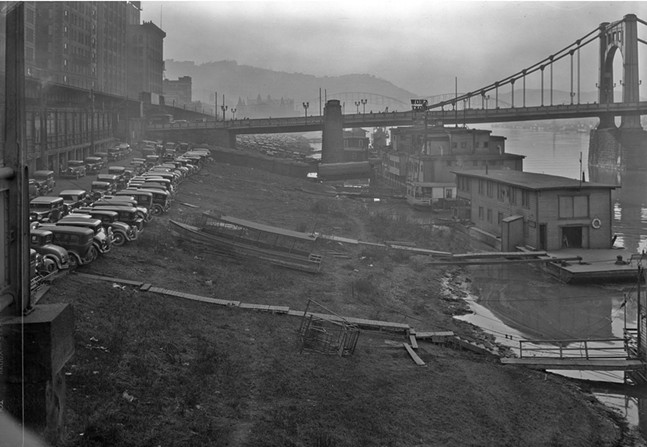
Downtown burlesque theater owner (and former brothel proprietor) George Jaffe held the lease, but Pittsburgh Steelers founder Art Rooney Sr. was long rumored to be in charge. His son, Art Rooney Jr., admitted as much in the 2008 biography he wrote documenting his father’s life. The FBI had been keeping tabs on Rooney Sr. since the 1940s because of his ties to gambling.
On May 15, 1930, federal prohibition agents led by Harold “Three Gun” Wilson raided the Show Boat. They strolled past Pittsburgh city police officers employed by the Show Boat to provide security at the ramp from the Mon Wharf. “The place was supposed to be above, beyond, and outside the law,” wrote Wilson in his memoirs.
Journalist Walter Liggett was in town during the raid, reporting for an exposé on crime and corruption here. He wrote: “The Show Boat, a floating gambling hell, moored on the Allegheny River at a street in the very heart of the city, also operated for nearly two years without police lifting a finger.”
One creative columnist dubbed the former floating palace a “pleasure scow.” A string of operators ran the Show Boat for Jaffe until 1939. They included roadhouse queen and former bootlegger Freda Pope. The floating lounge, with a new name and new owner, sank under suspicious circumstances in the Monongahela River in 1943.
As the Show Boat’s days were winding down, riverboat owner William Archey bought the Pittsburgh Yacht Club’s charter in the late 1930s and opened a floating speakeasy. Docked between the Sixth and Seventh street bridges on the North Side, Archey’s club — called the Ship Hotel — became a popular target in the press and county courtrooms.
Local journalists loved to write about the yacht club that had no yachts. In 1937, the Pittsburgh Press published a story about the club beneath the headline, “Yachting Club Minus Yachts Puzzles State.” Archey’s rebuttal: the club had no boats because its members fell on hard times in the Depression.
Between the 1930s and 1960s, more entertainment entrepreneurs opened floating establishments on the three rivers. Bobby Whites, also on the Allegheny River on the North Side, operated from 1937 to 1939 as a satellite location to a café owner’s often-raided speakeasy.
In 1963, Tom Lugen bought an old steamboat called the Jason and had it towed to a spot on the Allegheny River in O’Hara Township just outside of Blawnox. There, he opened the Thunderbird Boatel next to the old Montrose Hotel. Before closing in the mid-1970s, the Boatel was plagued by mysterious fires and was frequently fined by the Pennsylvania Liquor Control Board. Local mob historians believe the club was controlled by the New Kensington-based Mannarino brothers, longtime gambling racketeers who controlled much of Pittsburgh’s numbers action.
The Troiani brothers, Jul, Louis and Reynold, were longtime downtown bar owners. In 1966, they floated their own entry into the history books by opening the Pilot House. Moored at the Mon Wharf, it featured dining and dancing until 1984.
The Boardwalk and the End of an Era
In 1991, Tom Jayson added the Boardwalk complex to his Pittsburgh nightlife empire. He had already become nationally known for franchising his 2001 Club in more than 20 cities. While planning the Boardwalk, Jayson boasted to the Post-Gazette, “It will be the largest sports nightclub complex in the world!”
Jayson, 80, is old enough to remember partying at the Boatel in the 1960s.
“Back when I was young, I used to go up there all the time,” he says.
The memory stuck with him.
He bought four surplus barges and had them welded together to create a base for the floating nightclub complex. Like the bootleggers and gamblers who preceded him, Jayson opened a floating pleasure palace to take advantage of the river and avoid the hassles of trying to build on the shore in an area that was heavily regulated. He wanted to duplicate waterfront establishments he had seen in Florida.
“Even if you could build along the river, you still have to be back 50 feet or 100 so you're not right there where the boats are,” says Jayson. “I concluded there's only one way to duplicate: that would be to make it floating.”
The Boardwalk lasted until 2007. Like Bongiovanni’s venture in the 1920s, the business ended in bankruptcy court. In 2008, the barges were broken into two sections. One was floated down the Ohio River to Chattanooga, where it ultimately was scuttled after plans to reuse it in another entertainment operation sank. The other half was scrapped locally.
There are still vestiges of the days when nightclubs floated on the three rivers. The Gateway Clipper fleet, now based at Station Square, got its start in 1958 as a single 100-person boat moored at the Mon Wharf.
Within two years, there were multiple boats offering sightseeing and entertainment cruises. The fleet even had a children’s boat dubbed the Good Ship Lollipop. Business was so good that founder John Connelly sold the original two boats to the British government and bought a 400-passenger steamboat replica. The Gateway Clipper fleet now numbers five boats.
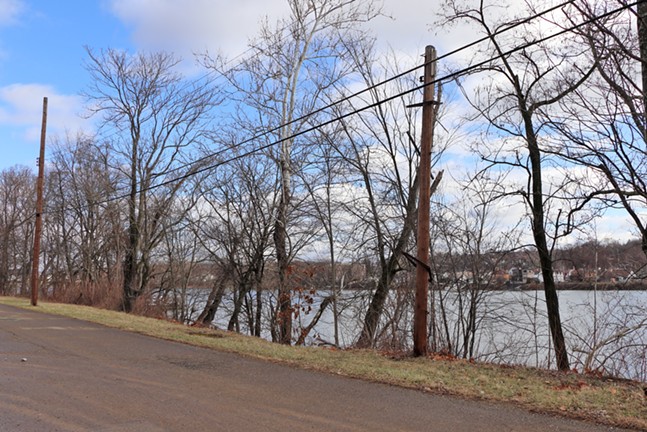
For a more subdued and educational entertainment experience, Rivers of Steel has a riverboat, the Explorer, that offers themed tours starting at its North Shore dock. Passengers can sign up to learn about the region’s history and groups can charter the boat for parties and special events.
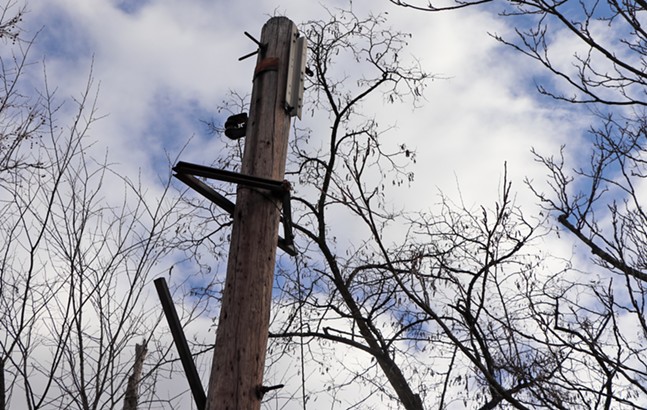
And then there’s Cruisin’ Tikis. While the Gateway Clippers and the Explorer offer a good cover for folks who simply want to party on the water, Cruisin’ Tikis are floating BYOB tiki bars.
Despite these latecomers and holdovers, Pittsburgh river entertainment venues are in history’s wake. “I guess that times change,” says Jayson. “People change their habits. I find that boaters, too, they don't spend any money because they have their own food, their own booze on the boat.”
Historian Morris agrees: “We have no connection with our riverfronts any longer … I applaud anyone who tries to do something to change that, whether it was the Boardwalk complex, [or] whether it's the Gateway Clipper fleet.”

